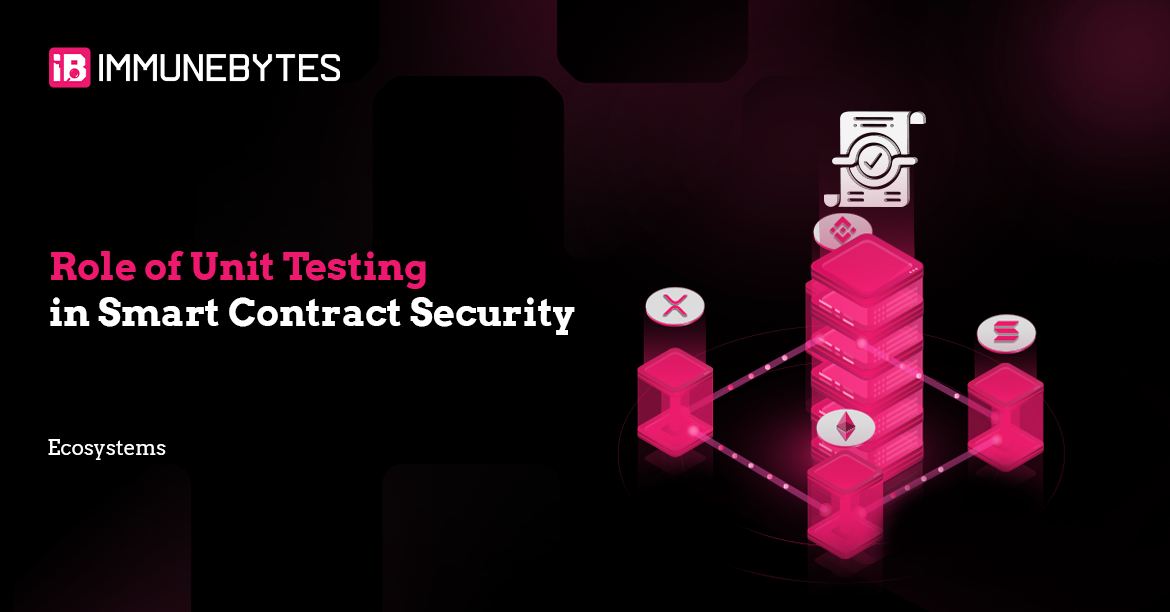Introduction
Smart contracts are self-executing programs that handle critical financial and operational transactions on blockchain networks. Due to their immutable nature, once deployed, they cannot be easily altered, making security a primary concern. A single vulnerability can lead to irreversible financial loss or system failure. This is where unit testing plays a crucial role in ensuring the security and reliability of smart contracts before they are deployed on the blockchain.
What is Unit Testing?
Unit testing is a software development practice where individual components or functions of a program are tested in isolation to validate their correctness. In the context of smart contracts, unit tests focus on specific functions or logic, ensuring they behave as expected under various conditions. The goal is to catch bugs, security vulnerabilities, and logical errors early in the development cycle.
Why Unit Testing is Critical for Smart Contract Security
1. Detecting Logical Errors Early
Smart contracts execute autonomously, meaning any bugs or logical flaws can have severe consequences. Unit tests help developers catch incorrect behaviors, such as miscalculations in token transfers, incorrect permission checks, or faulty state updates, before the contract is deployed.
2. Preventing Common Vulnerabilities
Many security exploits arise from predictable coding mistakes. Unit testing can help identify and mitigate:
- Reentrancy Attacks: Ensuring functions properly update states before external calls are made.
- Integer Overflows and Underflows: Preventing unexpected calculations leading to financial losses.
- Access Control Issues: Verifying that only authorized users can execute privileged functions.
3. Ensuring Business Logic Integrity
Unit tests ensure that the smart contract executes its intended business logic correctly. For example, in a token contract, unit tests can verify that only approved users can mint tokens, and the token balance updates correctly upon transfers.
4. Gas Optimization and Performance Testing
Smart contract execution incurs costs in terms of gas fees. Inefficient code can lead to higher transaction costs and potential execution failures due to gas limits. Unit testing helps measure and optimize gas consumption by identifying redundant computations or inefficient loops.
5. Enhancing Code Maintainability
A well-tested contract is easier to maintain and upgrade. Developers can confidently modify existing code without introducing new vulnerabilities or breaking existing functionality, as unit tests serve as a safeguard against unintended changes.
Best Practices for Unit Testing Smart Contracts
1. Test Each Function in Isolation
Each function should be tested independently to ensure it performs correctly under expected and edge-case scenarios. This helps identify issues at a granular level before integrating with the larger contract logic.
2. Use Various Inputs and Edge Cases
Contracts should be tested with normal, boundary, and extreme input values to identify potential vulnerabilities. For example:
- Large number inputs to check for overflow conditions.
- Edge cases such as zero-value transactions or invalid addresses.
3. Simulate Attacker Behavior
To improve security, tests should include scenarios that mimic common attack patterns, such as:
- Reentrancy Attacks: Calling a function repeatedly before the state updates.
- Access Control Violations: Attempting unauthorized access to admin functions.
- Manipulation of State Variables: Checking whether an attacker can bypass critical logic.
4. Leverage Testing Frameworks
Using dedicated smart contract testing frameworks can streamline the testing process. Popular frameworks include:
- Ethereum & EVM-Compatible Chains: Hardhat, Foundry
- Solana: Anchor Framework
- Polkadot & Substrate: Ink! Testing Suite These frameworks provide built-in utilities for contract deployment, transaction simulation, and state verification.
Limitations of Unit Testing
While unit testing is essential, it is not a silver bullet. It does not replace comprehensive security audits or formal verification methods. Limitations include:
- Limited Scope: Unit tests only verify expected behaviors but may not account for unforeseen external interactions.
- Human Oversight: Writing tests relies on the developer’s understanding of potential vulnerabilities, meaning some attack vectors may be overlooked.
- External Dependencies: Smart contracts interact with other contracts and off-chain systems, which cannot always be fully simulated in unit tests.
Conclusion
Unit testing is a fundamental pillar of smart contract security, providing a proactive approach to identifying vulnerabilities before deployment. By rigorously testing individual functions, simulating attack scenarios, and ensuring proper business logic execution, developers can significantly reduce the risk of exploits and improve contract reliability. However, unit testing should be complemented with other security practices such as code audits, fuzz testing, and formal verification to achieve comprehensive security assurance. In a landscape where security failures can result in millions in losses, thorough unit testing is not just a best practice; it is a necessity.

